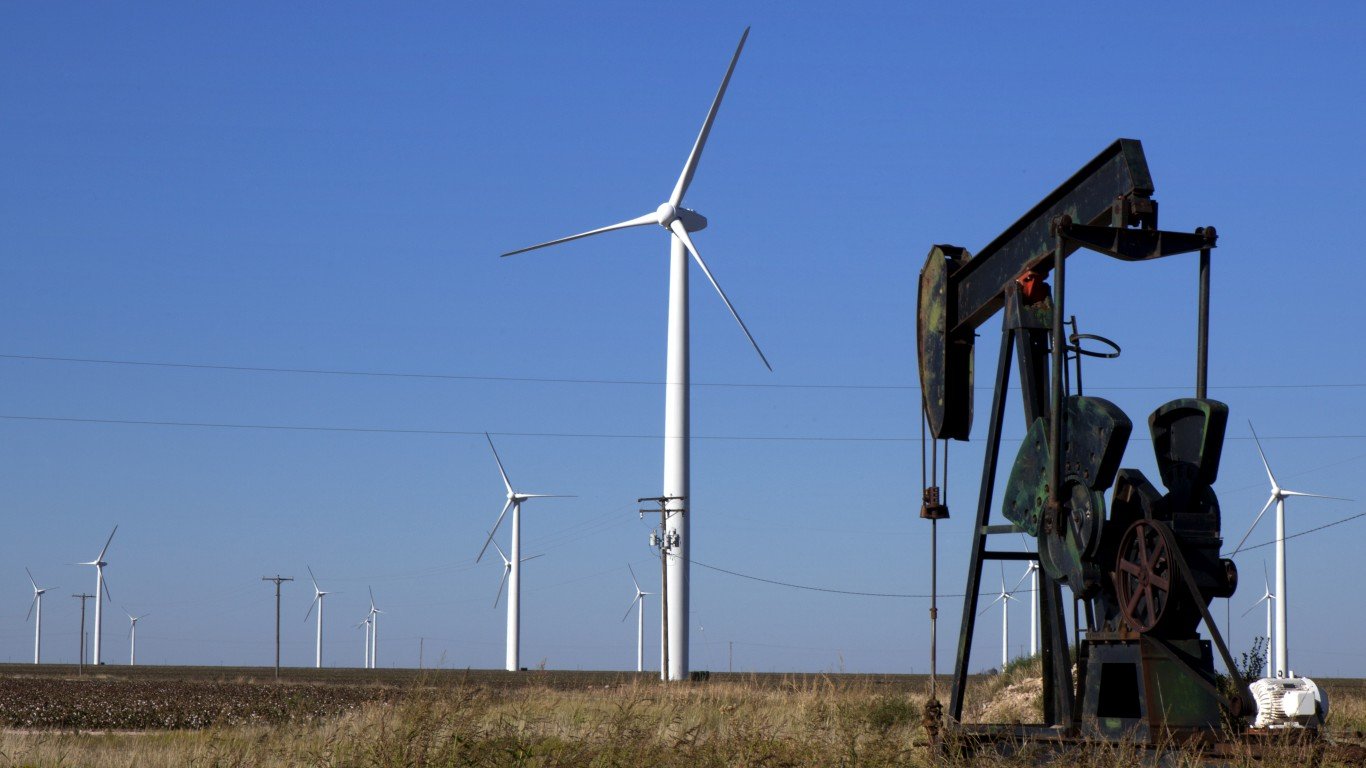

The year of 2019 has not been a particularly good one for energy stocks. At least, not for energy stocks that rely virtually exclusively on fossil fuels like oil and gas (forget about coal). One broad measure of how the sector is doing, the Energy Select Sector SPDR (NYSEARCA: XLE), is returning around 5% to investors so far in 2019, while the broad S&P 500 index is returning nearly 28%.
Oil and gas stocks track crude oil prices to a large degree. When crude oil prices are low, asset values decline along with revenues. This double-edged sword forces the energy stocks to choose between boosting their (currently low-value) reserves or keeping investors happy with dividend payments and share repurchases. Going into 2019, most energy producers chose to keep investors happy and kept capital spending low.
For 2020, most analysts are predicting more of the same. Estimates of next year’s crude oil prices are not really any better than current prices, even taking into consideration the recently announced production cuts from OPEC+. In its latest Short-Term Energy Outlook, the U.S. Energy Information Administration (EIA) actually expects prices for West Texas Intermediate (WTI) to drop from an average of $56.74 a barrel this year to $55.01 next year. Brent crude is forecast to slip from $63.93 a barrel to $60.51 in 2020.
Not a terribly rosy picture, but before you click the close box, we should point out that there are still some energy stocks, including oil and gas stocks, that are potentially undervalued going into the new year. Think of it this way: energy stocks, particularly those weighted heavily toward oil, may have been oversold, leaving plenty of headroom for growth in 2020.
Earlier in December, Thomas Hayes, chair of New York-based hedge fund, Great Hill Capital, told the Financial Times, “Investors have to think about the [exploration & production] subsector like a portfolio of high-yield junk bonds. While 10-15 percent may default and go bankrupt, the remaining 85-90 percent will dramatically outperform.”
There is one consideration that must be made before thinking “Value means automatic upside!” The rise of environmental, social and governance (ESG) investing is creating an entire movement that is completely ignoring and shunning anything tied to fossil fuels. That means that something may sound cheap at a theoretical eight times earnings, but that entire mountain of new capital heading into stocks will shun the group, even if the valuation were to drop to five times earnings. One recent update on the ESG front came from Goldman Sachs, when the firm announced a new target of $750 billion in sustainable finance initiatives with a focus on climate transition and inclusive growth for the coming decade. That’s not an outright exit of oil and gas, but it is just one more tell about where much of the investor interest lies for the coming decade.
While most of the market value in energy is still driven by oil and gas, there are some considerations within solar, renewable and alternatives that should be considered. 24/7 Wall St. has included one solar stock and two lithium-oriented companies due to the changes that are up and coming. Recent tax breaks for the biodiesel industry may also make other players more attractive for 2020.
Here are 10 energy stocks that are deemed as undervalued by the investment community for 2020.
Exxon Mobil
This is America’s largest oil company by market value, but the $300 billion market cap is way down from its glory days and is now only about 15% of Saudi Aramco’s. Exxon Mobil Corp. (NYSE: XOM) is also valued at close to 21 times a mix of expected 2019 and 2020 earnings, with roughly a 5% dividend yield. Up by a paltry 1% in 2019, the consensus price target of $78.36 implies upside of almost 12% from its current $70 share price, but its 52-week range of $64.65 to $83.40 shows how challenged it has been. Merrill Lynch is still incredibly positive about Exxon, so much so that one might wonder if the firm is just too positive.
Petroleo Brasileiro
The Brazilian oil giant known as Petrobras has added nearly 11% to its share price in 2019, but even so, its price-to-earnings ratio is under 13 and the implied upside is right around 28%. This company’s biggest problem is having its profits plundered by the Brazilian government, which owns a controlling interest.
Petroleo Brasileiro S.A. (NYSE: PBR) expects its equity value to rise by 45% by 2021, mainly through the spending reductions and the sale of noncore assets. Petrobras has forecast $75 billion in capital spending for the five-year period between 2020 and 2024, and about 59% of that will be directed to the company’s vast offshore pre-salt projects.
While Petrobras may screen as cheap internally and externally, any investor should keep in mind that Brazil’s state-ownership structure disadvantages the common holders in the capital structure far more than any traditional U.S. company.
Royal Dutch Shell
The Anglo-Dutch supermajor integrated oil company said earlier this year that it plans to become the world’s largest electricity producer by the early 2030s. The trick, of course, will be to replace a massive oil and gas business by acquiring scalable projects and companies to replace fossil-fuel revenues.
Royal Dutch Shell PLC (NYSE: RDS-A) has a hedge, of course: its production in the Permian Basin has risen by 80% this year and it is currently negotiating with privately held Endeavor Energy to acquire another 64,000 barrels a day of production. The stock is trading down about 3.4% for the year to date, at around $58.60, with an implied upside of nearly 30% to a 12-month price target of $76.03.
Thank you for reading! Have some feedback for us?
Contact the 24/7 Wall St. editorial team.
 24/7 Wall St.
24/7 Wall St.

